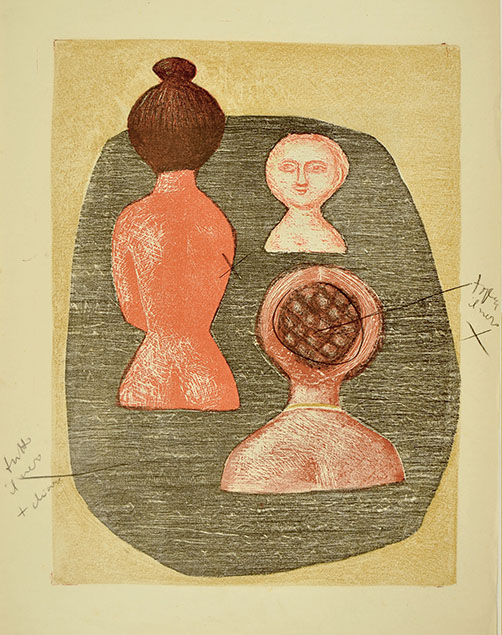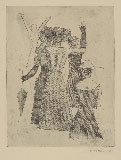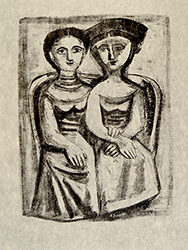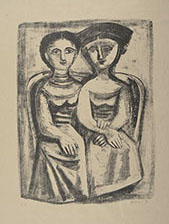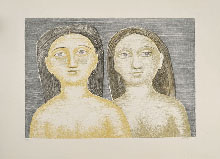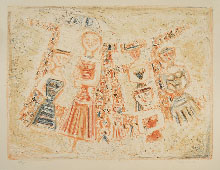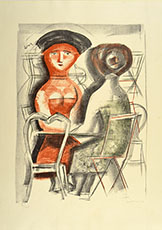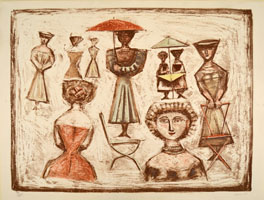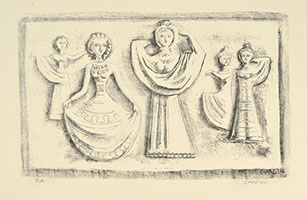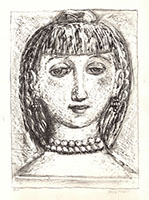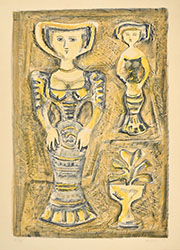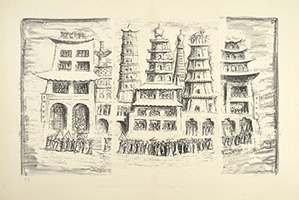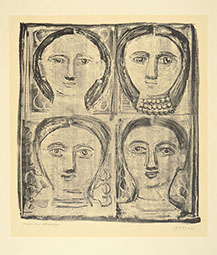(Berlin 1895 - Saint Tropez 1971)
DONNE A ISCHIA, a Unique artist's proof, 1952
Colour lithograph, 1952, Meloni-Tavola 133. A unique artist's proof with written notes in black chalk regarding the inking of the black. On thin wove paper. The lithograph was conceived for the set Campigli La Ruche, Published by N.R.F. in Paris, 1952, printed by il Cavallino, Venice. Our copy is printed with a yellow background that no longer appears in the edition. The lithographic area 473 x 352 mm, the sheet measuring 595 x 440 mm.
After military service during World War I, Campigli moved to Paris in 1919. In Paris he worked for nine years as a journalist for Il Corriere della Sera, during which time he began to paint. Self-taught as a painter, he was initially drawn to Purism, Léger, the neoclassicizing works of Picasso and Metaphysical painting. Campigli also admired the preclassical works in the Louvre, but it was only in 1928, when he saw the Etruscan collection at the Villa Giulia in Rome, that he was profoundly affected by ancient art. His love of archaism and of hieratic and abstract form led him to find sources in Cretan, Pompeian and Coptic as well as Etruscan art. Campigli very rapidly won acclaim, and had exhibitions in Rome, New-York, Venice and Paris. He settled in Saint Tropez in 1949; the Palazzo Reale in Milan held a big retrospective show of his work in 1967. Campigli always showed interest in prints, mainly lithography.
